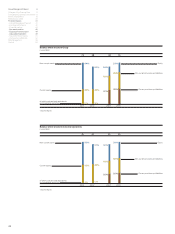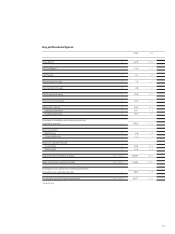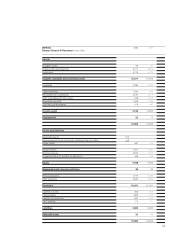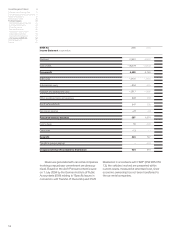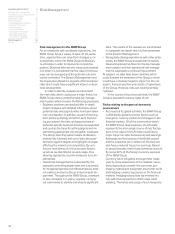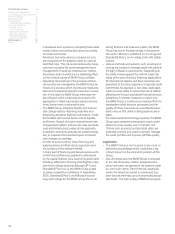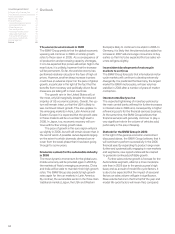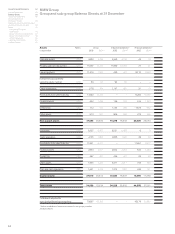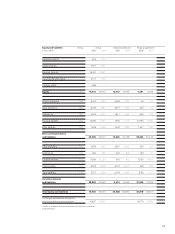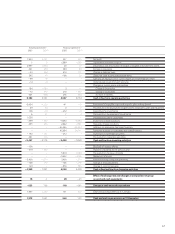BMW 2005 Annual Report Download - page 58
Download and view the complete annual report
Please find page 58 of the 2005 BMW annual report below. You can navigate through the pages in the report by either clicking on the pages listed below, or by using the keyword search tool below to find specific information within the annual report.57
are set out in guidelines applicable throughout
the BMW Group.
A cashflow-at-risk model and scenario analyses
are used to measure exchange rate risks. These
instruments are also used as part of the process
of currency management for the purpose of taking
business decisions.
– Changes in the international raw material markets
also have an impact on the business develop-
ment of the BMW Group. In order to safeguard
the supply of production materials and to min-
imise the cost risk, the commodity markets rele-
vant for the BMW Group are closely monitored.
The market price trend of precious metals such
as platinum, palladium and rhodium, for which
appropriate hedging strategies are decided upon
by the Raw Materials Committee, is also impor-
tant in this context.
– Changes in the price of crude oil, which is an im-
portant basic material for components, have an
indirect impact on production cost. Long-term
supply contracts with suppliers reduce the risk
exposure. As a manufacturing enterprise, the
BMW Group is also affected by changes in ener-
gy prices, caused by market factors and tax legis-
lation.
– Cyclical economic volatility also presents an ele-
ment of risk for future business development.
Unforeseeable interventionist economic policies
can also impair the BMW Group’s performance
in specific markets. The BMW Group anticipates
these risks by monitoring the markets in detail
and using early warning indicators. Risk is also
spread due to the worldwide nature of the BMW
Group’s activities.
– An escalation of political tensions, terrorist activi-
ties or possible pandemics could have a negative
impact on the economic situation, which in turn
could have a negative impact on the business de-
velopment of the BMW Group.
Specific industry risks
– Changes in fuel prices, which may be market-in-
duced or due to governmental tax policies, and
the increasingly stringent requirements to reduce
fleet fuel consumption as well as CO2and NOX
emissions, all continue to set high demands on
engine and product development.
Operating risks
– Risks arising from business interruption and loss
of production are insured up to economically
reasonable levels. The BMW Group’s extremely
flexible production network and working time
models also help to reduce operating risks.
– Close cooperation between manufacturers and
suppliers is normal in the automotive sector, and
whilst this provides economic benefits, it also
creates a degree of mutual dependence. Some
suppliers have become very important for the
production activities of the BMW Group. Delivery
delays, cancellations, strikes or poor quality can
lead to production stoppages and thus have a
negative impact on profitability. The Group miti-
gates this risk by employing extensive procedures
for selecting, monitoring and handling suppliers.
Before selection, for example, the technical com-
petence and financial strength of potential sup-
pliers are appraised. A comprehensive Supplier
Relationship Management system, which also
takes account of social and ecological aspects,
helps to reduce risk exposure.
Risks relating to the provision of
financial services
–
As a consequence of the growth in lease business,
the BMW Group faces a volume-induced increase
in the residual value risk on vehicles returned to
the Group at the end of lease contracts. Changes
in the residual values of BMW Group vehicles on
the used car markets are therefore constantly
monitored and forecast. The overall risk position



